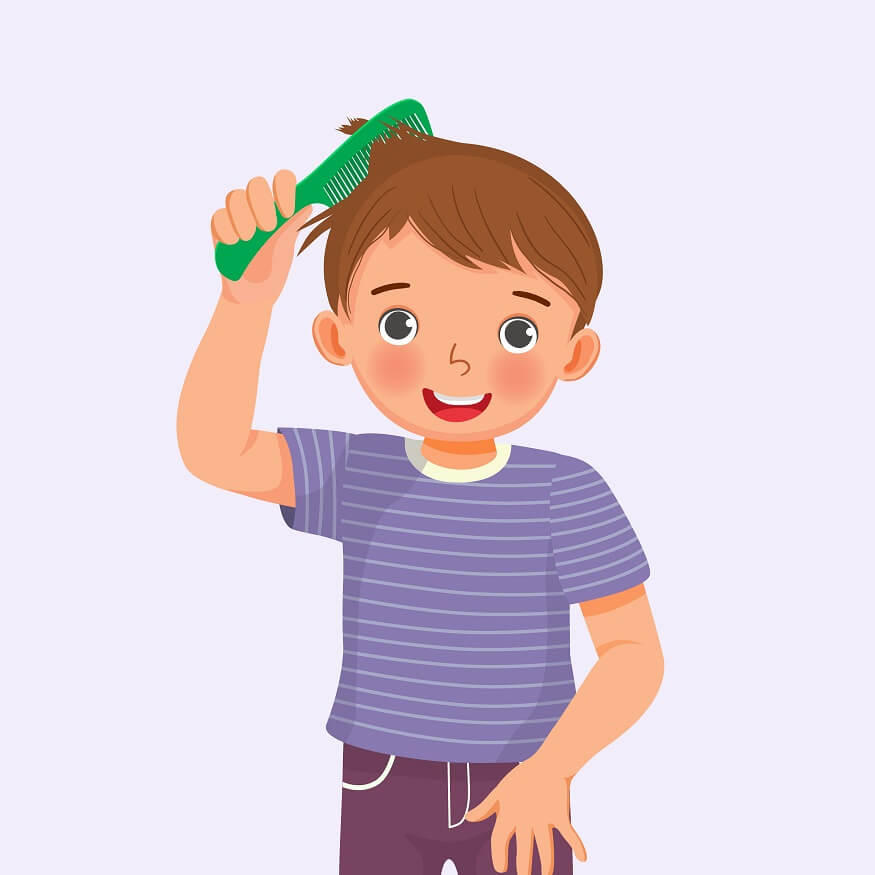Every parent experiences a daunting period with their kids, and the teen stage of a child’s life is a significant one. It is often wondered by every parent how a kid changes overnight. It is like a child goes to sleep and wakes up as a strange person with new habits and demands, and oh my! Oh my! The mood swings. During adolescence, this strange behavior can be partially attributed to biology. The mood is affected by the significant hormonal shifts that occur during puberty. So, what are mood swings exactly? As a teen matures, irritability, sudden intense sadness, and frequent frustration spikes are experienced due to the chemical changes that shift often. The main reason for mood swings during teenage years is the increased shifts of hormones and chemical changes.
So, no, kids do not suddenly change and are definitely not to be blamed for these changes. The age for these changes and mood swings basically starts when children experience a surge of hormones between the age of 6 and 8 years old, which can cause heightened emotions. It is necessary for parents to read and learn more about the symptoms of premature adrenarche and you will find the most appropriate ways to handle these changes.
Navigating the Emotional Rollercoaster in Teen Kids
While we all are still learning to process and express these emotional changes, kids have the most confusing part to deal with. They have to learn to be a grown-up while still being a child. Children have new thoughts and new emotions every single day, they have to curb a lot and grasp more than they can during this time of their life. Making new friends and taking on new responsibilities can all affect how a child feels and reacts. When kids learn how to solve problems on their own as they move towards independence it takes them a step ahead towards adulthood leaving behind the trail of memories of childhood.
It is not at all unusual for mood swings during teenage years to shift quickly and for a child’s emotional response to be strong and strange. These changes are all a part of a child’s development, the changes in their brain activity cause intense fluctuation in their hormone levels and this mainly happens in an adolescent’s body.
A Message to Teen Parents and Teachers
Through this blog, we want to convey an important message, especially to teen parents and teachers who deal with teens, that mood swings during early adolescence might actually be temporary and normal and are not necessarily a reason to worry. However, some teens experience very sharp swings and temperaments that do not even out, and that is a cause for concern. There is a certain age at which a child reaches a peak in their emotional confusion and satisfaction. All of these changes depend on different aspects that we notice, but the peak we see in terms of the highest positive and lowest negative emotions is to be noted, and seek professional help if needed.
Also Read: Tips for Parents on How to Deal with Teenage Mood Swings
Puberty essentially begins somewhere between the age of 8 and 13 years old and lasts several years. Puberty involves both physical and emotional changes. These changes can be very challenging and exciting at the same time. So, as parents and teachers it is crucial that you be well prepared and informed to handle these changes. You must be capable of tackling these situations in the best possible way, this will help you to manage the changes that a child will experience during puberty.
Handling Mood Swings in Girls
While puberty hits both girls and boys there are very specific changes that affect female teenage mood swings. Their mood swings during adolescence can partially be handled with a different approach and mentality. There are ways to handle mood swings in girls.
- Firstly, teach them to accept that whatever is happening is not completely in their control.
- Teach girls to have dignity in her feelings.
- Teach your kids that at no point in time let themselves feel dragged down or weighed by these changes.
- As parents and the elders in the family it is upon us to not take these moods personally and do not let your child face the brunt of it.
- As parents and elders in the family it is necessary to set boundaries and ensure they are obeyed.
Acknowledging and Supporting Teenage Boys
Since mood swings are normal and are a part of puberty it impacts both females and males. Hence, mood swings are noticed in boys too. Mood swings in teenage guys are absolutely normal and the experience of these changes is not easy for them either. It is a known fact that during puberty a child’s emotions tend to become stronger and more intense. It makes them more irritable and sensitive, while girls are able to showcase their emotional side easily by crying or screaming boys tend to get aggressive and violent. Their mood might change more frequently, rather quickly and very randomly.
Teenage mood swings may include strong emotions that they have never experienced before and it is our duty as a society to help them curb these changes and accept themselves with all the flaws and deal with every change in a very respectful manner. Teaching kids, especially teens about self-love and self-acceptance is very important.
Also Read: 10 Ways to Maintain a Healthy Relationship with Children
Here are some significant ways to treat changes in mood:
- Ensure that a child gets regular exercise. Because outdoor activities and exercising greatly helps with physical and mental health.
- Avoid caffeine for kids and keep sugar intake in control.
- Seek help from pediatricians and doctors to provide appropriate supplements.
- Change a child’s diet appropriately and ensure they are getting a wholesome and nutrient-loaded meal.
- It is important for teen parents to practice stress management at home and seek professional help if needed.
- Ensure that teens get enough and quality sleep.
Also Read: What is Teenage Stress? It’s Causes, symptoms
These tips will help you treat and manage teenage mood swings. Now that we have learned so much about mood swings during teenage years, we might ask how long they last. For some kids, mood swings can cause physical pain and emotional stress severe enough to affect their daily lives. Regardless of the severity and the symptoms, the signs generally disappear slowly and steadily in mood swings in teenage guys. However, female teenage mood swings disappear within four days after the start of the menstrual period.
Since girls and boys begin puberty at different ages, it can start as early as age 9 for both. By age 15, most kids have fully developed. It is during these years that both their body and their emotions will have a drastic change.
Here is some food for the mood: Protein consumption has been linked to higher levels of dopamine and norepinephrine, which are brain chemicals that play an important role in a person’s mood. It helps to motivate and concentrate. Food such as fish, chicken, cheese, peanut butter, turkey, tofu, beans, eggs, lentils and legumes, seeds and unsweetened yogurt are considered to be high in proteins.
One might be able to regulate a child’s mood with the following: Create a schedule for kids. It is necessary to have a routine for them, especially when it comes to eating, physical activity, and sleeping. Regular exercise and getting sufficient sleep along with a very balanced diet will help children and parents curb these changes easily and in a better way.
Enroll your child with EuroSchool today!











